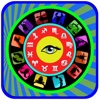How to Get (A) Fabulous Sky Ship On A Tight Budget
We may examine simulation merchandise to information, however then we can’t untangle errors from our integration scheme from errors in sky and instrument modeling. We display the usefulness of those RIME options for validation by evaluating them to simulated data, and present that the remaining differences behave as anticipated with diversified sky resolution and baseline orientation and length. Sequence options still have the profit that their precision is impartial of the properties of any simulator they’re used to validate, and they can be recognized to converge to the proper values. On this paper, we describe several analytically-outlined patterns of full-sky diffuse emission for which a closed-kind or converging sequence answer will be discovered. Several effects associated with the horizon have been discovered to be vital to 21 cm science, many found from instrument simulations, and so verifying that simulators can handle the horizon appropriately might be necessary to the long run use of instrument simulation in this area. A visibility simulator have to be validated to ensure that its accuracy is limited only by the standard of the instrument and sky models used, and not on the combination scheme.
Carefully-weighted quadrature strategies may be used on the expense of having to interpolate sky and beam fashions to the quadrature nodes. The state-of-the-art in interferometer simulator precision is probably finest demonstrated by the accuracy of foreground subtraction strategies (Li et al., 2019; Mertens et al., 2020). In these cases point sources formed the basis of the mannequin. These foreground parts appear strongest on short baselines and are visible in all instructions and on all angular scales (Haslam et al., 1982; de Oliveira-Costa et al., 2008; Kim et al., 2018; Thyagarajan et al., 2016; Presley et al., 2015). Though a number of methods of avoiding or subtracting this diffuse foreground power have been developed, 21 cm experimental outcomes are nonetheless limited by residual foreground energy. Simulations of expected instrumental output are used for instrument design (Ewall-Wice et al., 2016; Thyagarajan et al., 2016), pipeline verification (Patil et al., 2016; Aguirre et al., 2021a), and calibration (Li et al., 2019). Simulating a a hundred K-a thousand K smooth spectrum foreground towards a 10 mK background requires that any visibility errors be smaller than one half in 10,000. The most important metric in all of these cases is the quantity of spectrally easy foreground energy coupled into power spectrum modes which should otherwise be dominated by 21 cm background.

One strategy would be to simulate a sky model444Throughout this paper, phrases like “simulate a sky model” could also be interpreted to mean “generate simulated visibilities for a given sky and instrument model.” This should not be confused with the task of modeling sky emission. The accuracy of simulated point-source visibilities, discounting code errors, is restricted by the standard of the instrument and catalogs. 2021), and Meqtrees222Meqtrees is able to simulating resolved sources as Gaussians, shapelets, or as level-supply pixels, however we will find no reference to utilizing it for widefield diffuse simulation. From the instance, we can even see that the community can discover panels reliably in two distinct roof types current in the Rwanda information. Singles may discover appropriate match. Most importantly, one has no means of telling whether or not the simulator is converging to the correct reply – it may be precise, but not correct. 5 appropriate diagnoses, the list of potential diagnoses may be massive. Diffuse galactic emission, nonetheless, is a vivid foreground at giant scales and the 21 cm background is intrinsically diffuse. Once more, the sunshine curves from the two NuSTAR models have been co-added and background was subtracted. We have now found options for a number of integrands that are comparable of their properties to the diffuse, all-sky, nature of the galaxy and 21cm background.
Errors found compared with information run the chance of experimenter bias. When utilized in calibration, errors within the simulations can seem to provide foreground bias when none is there (Barry et al., 2016). Errors in simulated output should not generally reported on within the literature but are commonly discovered during their growth. Can there be life on the sun? There are several common approaches to finishing up this integral, corresponding to by treating map pixels as level sources (e.g., OSKAR Kloeckner et al. These areas are capped with shield volcanoes, the place molten rock from the magma broke via the crust. Low-frequency radio observatories are reaching unprecedented ranges of sensitivity in an effort to detect the 21 cm signal from the Cosmic Daybreak. Detection and characterization of 21 cm emission throughout and previous to the Epoch of Reionization (EoR) has motivated substantial funding in new low-frequency radio telescopes. This has motivated the design of broad-subject, compact interferometer arrays which are very delicate to low-frequency diffuse radio emission, however are additionally very sensitive to diffuse foregrounds – Galactic synchrotron emission and the collective contributions of unresolved radio galaxies. In conclusion, the brand new data are enhancing our understanding of the radio/SFR relation of SFGs, but growing complexities, similar to dependencies of the relation on additional parameters like the stellar mass and redshift, are emerging.






